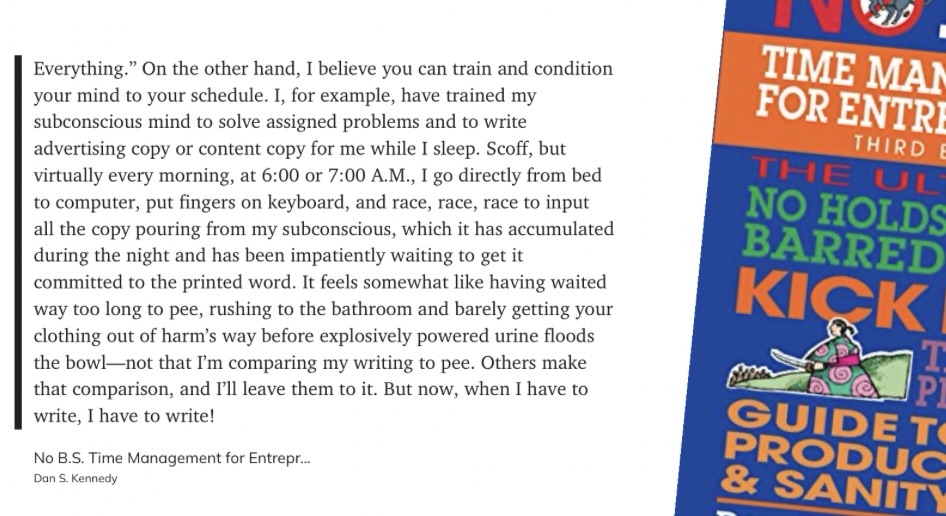I was thinking it’d be good to write notes for 3 book highlights daily. I’ve been re-reading (okay, listening to) “Tiny Habits” by BJ Fogg.
The essence of Tiny Habits is this: Take a behavior you want, make it tiny, find where it fits naturally in your life, and nurture its growth. If you want to create long-term change, it’s best to start small.
It was a reminder that it’s probably good enough to start with 1 book highlight daily. And even that is a little bit too big for the framing of a tiny habit. It’s the whole “floss one tooth” thing.
What if it were even smaller than writing notes for one book highlight? I made it smaller by reducing the number of highlights. I can now separate into the two activities.
1. Picking a book highlight
2. Writing a note about the book highlight
So I could just start celebrating by picking a highlight to write about in the first place.
That might still be too big to be “tiny”. First I should just build the habit of going through some book highlights every day. Luckily I have an old system set up for that. I have a few different book highlight digests from Readwise.
Gaming, Creativity, Fitness, and the uncategorized digest.
Unfortunately I’ve tended to ignore these. So it might just be a matter of picking a good prompt for when to read through one of these and picking one highlight to write about then moving that to WordPress.
More to think about here. Anyway here’s a second highlight from the book. Which highlights that you can practice getting better at looking at habits and thinking up solutions. BJ Fogg does a behavior swarm with index cards:
When I first started researching and experimenting with Behavior Matching, I bought a lot of index cards. With practice, I learned to Magic Wand a Swarm of Behaviors very quickly. I’d set a timer for five minutes and see if I could write down twenty-five behaviors on the cards. (Easier than you think.) Then I’d sort the behavior cards and plot them on a Focus Map on the kitchen counter. It was like solving puzzles.
25’s a lot so here are 5 behaviors I can have to publish one small thing daily.
1. Go through my Readwise emails
2. Open MarsEdit on my laptop
3. Have a template in Obsidian
4. Set Obsidian up to post a draft to WordPress
5. Put one single highlight in Drafts every day
All of these would make it easier to get into an editor that can publish to this blog.

